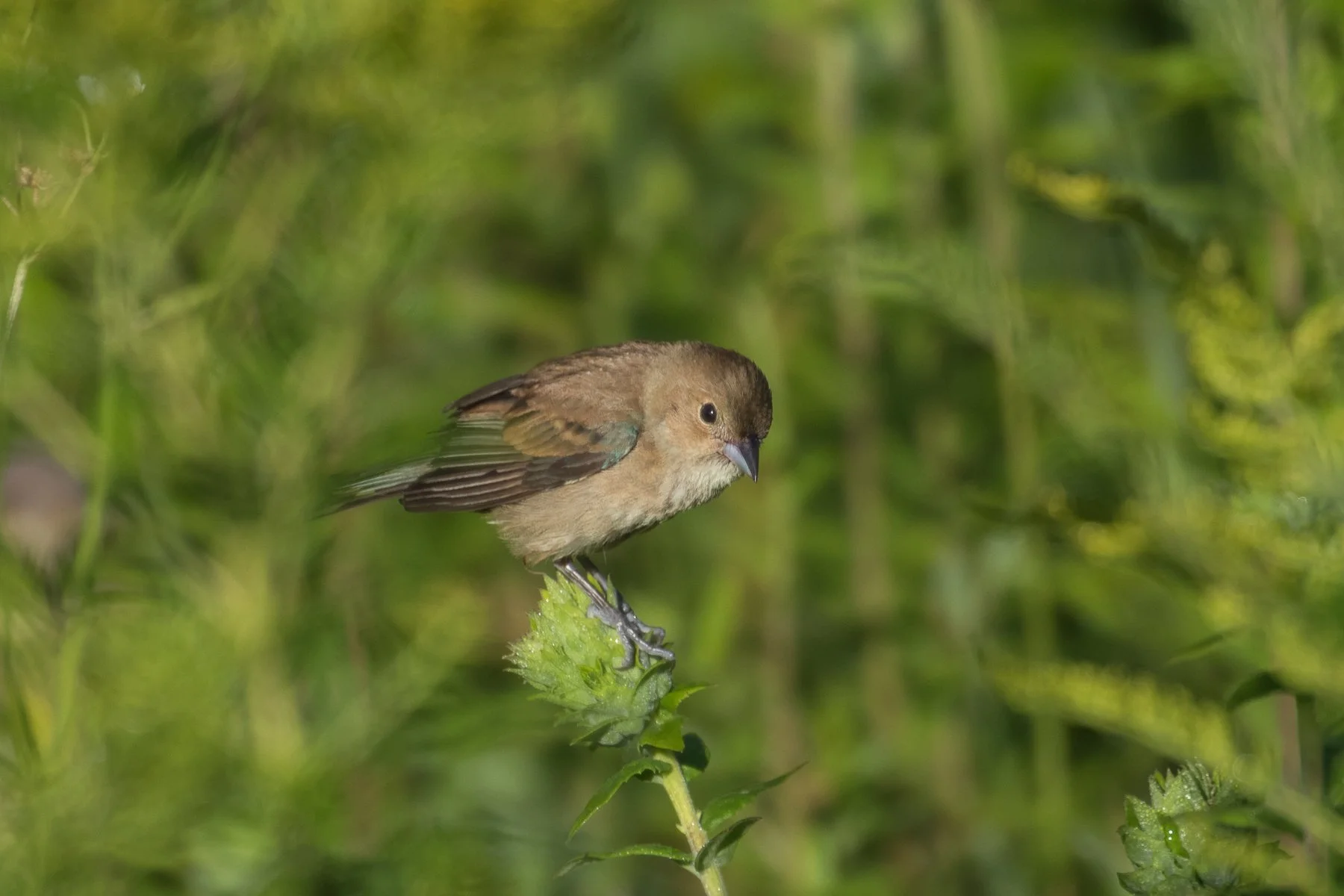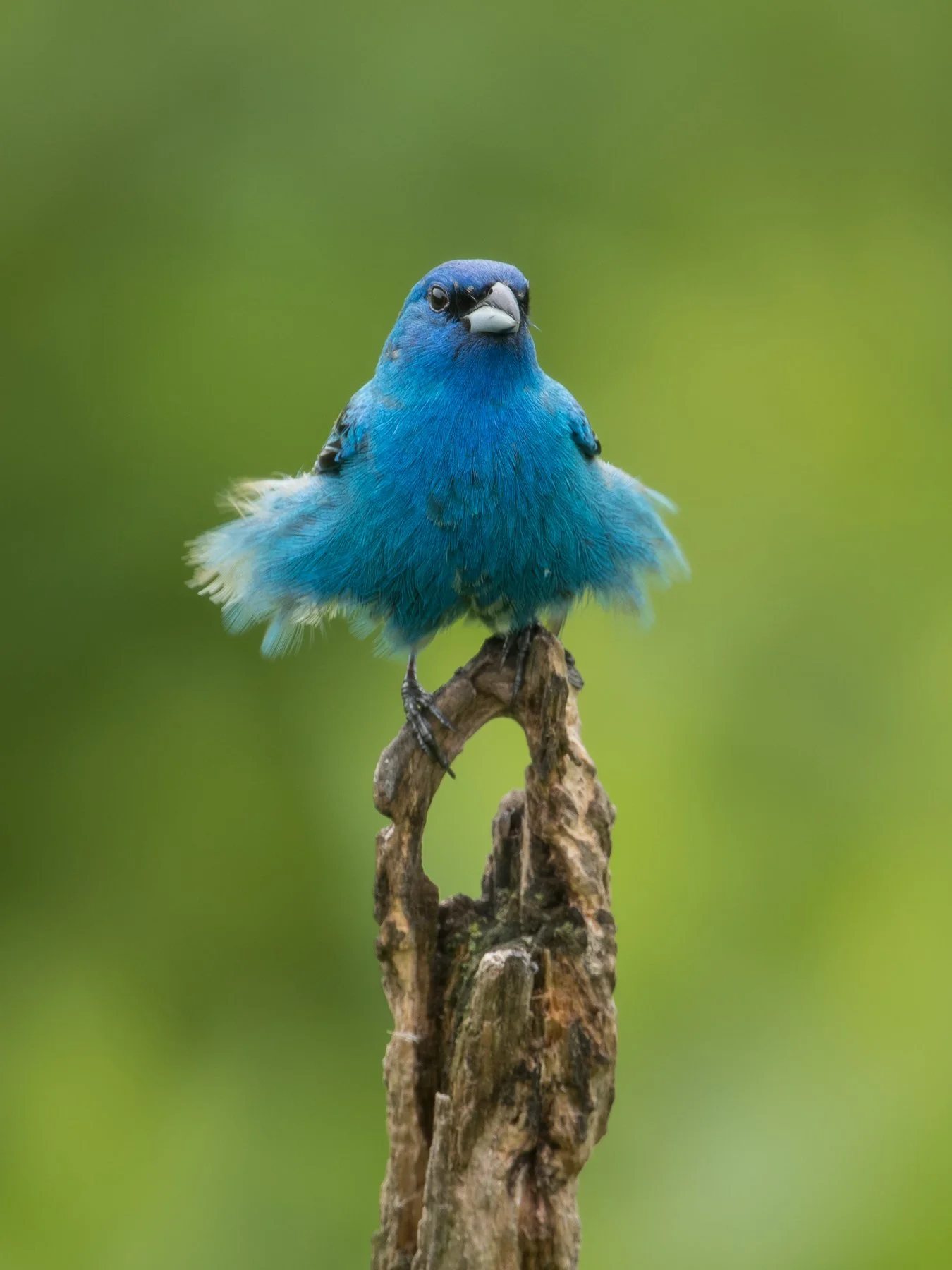It’s one of those cool, misty mornings in late July. I am awakened at 5:30 by a sweet song in the nearby prairie—the paired notes of an Indigo Bunting. The singing continues while I have my breakfast and coffee. The bird is still singing when I come in for lunch and dinner. Even after the sun goes down, the little bird sings for another 20 minutes!
Female Indigo Bunting (photo by Gary Shackelford).
I first look for a brilliant blue bird sitting at the top of a tree or on a bare wooden perch, but no luck. The prairie plants are very tall now and I finally spot him in the vegetation atop a spike of pale Indian plantain. After singing about 10 minutes from that perch, he moves to a nearby goldenrod. The female is quietly feeding nearby. She is mostly brown with a touch of blue on her shoulders and back.
The next day, I see two males perched about 30 feet apart, engaged in a singing battle. Their songs are very similar. One of the birds adds a wing threat, and the interloper flies away. Later in the week, a Song Sparrow moves into the territory. The bunting doesn’t mind this bird singing nearby, and I now enjoy both songs of late summer.
Male Indigo Bunting giving agonistic display (photo by Gary Shackelford).
Birds of the World describes the Indigo Bunting as a voluble singer—and so he is! In the 1930s, ornithologists clocked buntings singing up to 200 songs per hour and continuing to sing at least once per minute all day.
This beautiful songster is common throughout eastern and mid North America, and his song has been studied extensively with some surprising results. After fledging, juvenile males have a “variable subsong”—they do not learn their fathers’ songs. When a young male arrives on a new (non-natal) territory for his first breeding season, his songs are short with changing notes. As the season progresses, his song changes to match that of another male in the territory. In laboratory studies, young males reared in cages with an adjacent male on either side—one they could make visual contact with, and one they could not. They found that the young males learned the song of the tutor they could see.
This learning effect is so strong that the songs of the Indigo Buntings in your neighborhood will be very similar across multiple generations of birds! These are called local song dialects or song neighborhoods.
Male Indigo Bunting singing atop wooden snag (photo by Gary Shackelford).
Come to think of it, the amazing local variations of the bunting song may explain why it takes me a little longer to identify an Indigo Bunting by song when I am birding away from home!
Written by Penny Shackelford, Fair Meadows Sanctuary resident manager
Cover image: Male Indigo Bunting perched atop goldenrod (photo by Gary Shackelford).








